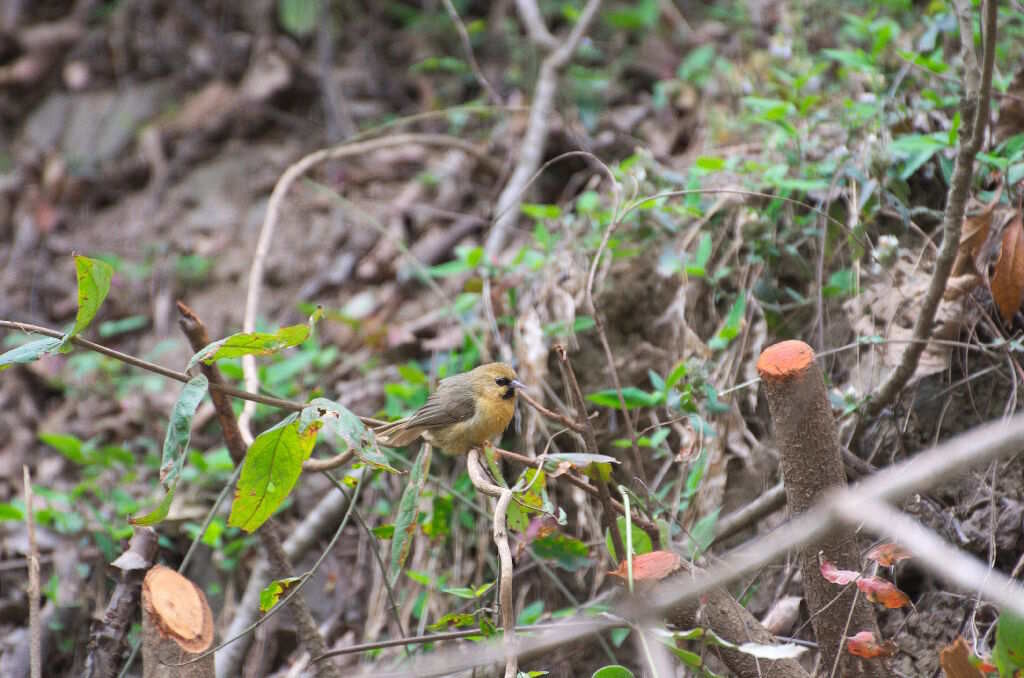
Stachyris pyrrhops (Black chinned babbler)
Stachyris pyrrhops, more commonly known as the Black-chinned Babbler, is a discreet yet ecologically significant bird species found in the lower to mid-elevation forests of the Great Himalayan National Park (GHNP). Its subtle brownish plumage, black chin patch, and distinct white eye-ring make it recognizable to trained observers, though it often remains hidden in dense vegetation.
This babbler is not only a visual delight for birdwatchers but also plays an important role in maintaining the ecological balance of GHNP’s forest floor and undergrowth ecosystems.
Habitat and Distribution in GHNP
In GHNP, the Black-chinned Babbler primarily inhabits moist temperate forests, dense undergrowth, and mixed broadleaf woodland zones ranging from 1,000 to 2,400 meters in elevation. It prefers areas with rich shrubbery and leaf litter, where it can forage for insects and remain out of sight.
Within the park, sightings are more frequent along less-disturbed forest trails, especially in regions that maintain a thick understory, which is essential for the species’ feeding and nesting habits.
Behavior and Feeding
This species is insectivorous, feeding on small arthropods, beetles, and larvae. It forages actively near the ground, often in pairs or small groups, occasionally forming part of mixed-species flocks. Its behavior is typically secretive, relying on thick foliage to avoid predators while remaining in constant motion through low vegetation.
Vocalizations are soft and brief—generally low whistles or trills—which are more often heard than the bird is seen.
Conservation Status and Importance
While Stachyris pyrrhops is currently listed as a species of Least Concern, it is sensitive to environmental changes, particularly those that affect understory vegetation. GHNP’s protection of natural forest dynamics makes it a crucial stronghold for the species.
Its continued presence in the park serves as a bioindicator of healthy ground-level habitat structure and forest integrity in the Himalayan subtropical and temperate zones.
| Common name | Black chinned Babbler |
| Scientific name | Stachyris pyrrhops |
| Family | Sylviinae |
| Description | It has Black chin and lores, and orange –buff underparts. It is Resident in Himalayas and found in undergrowth in moist forest. |



